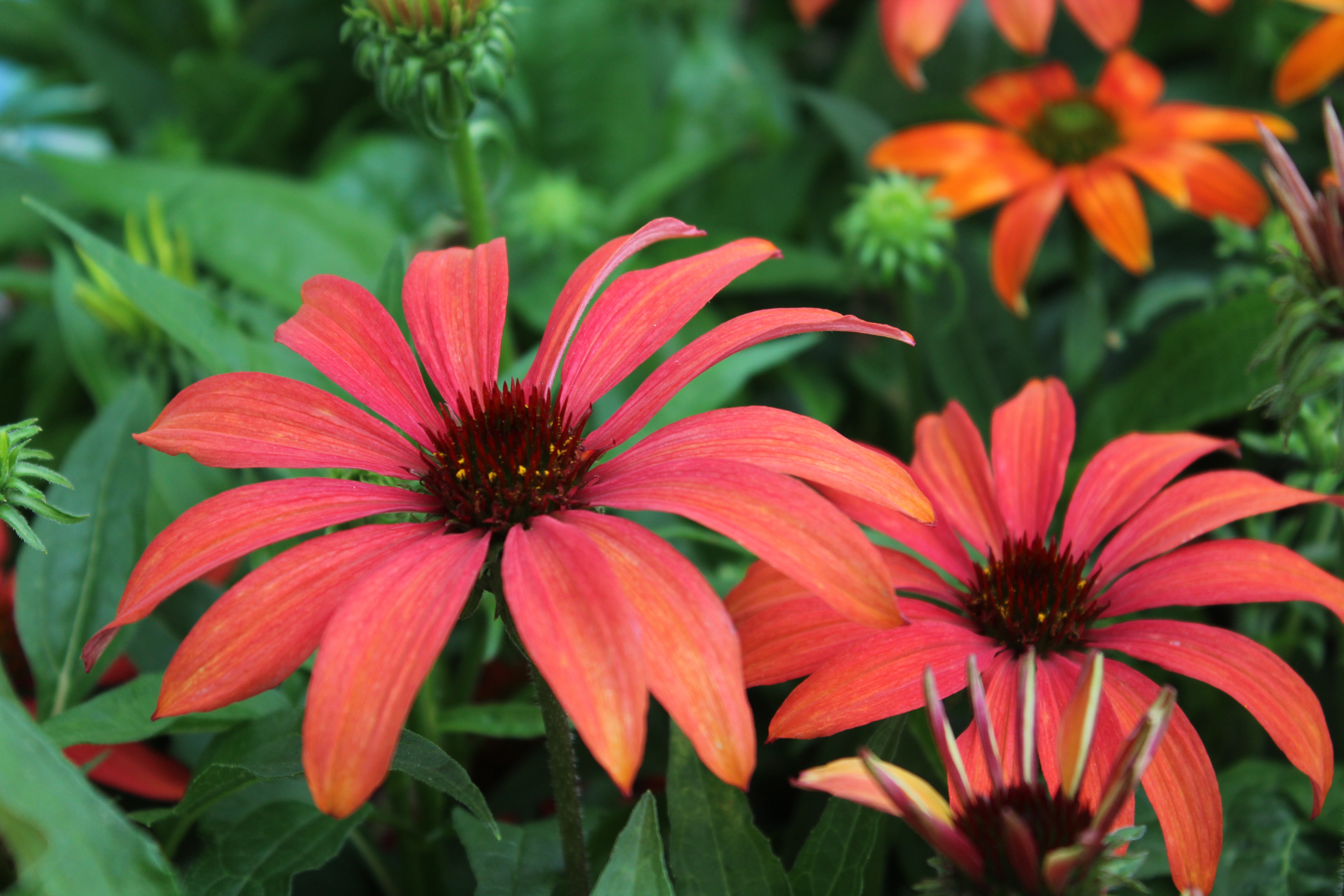How to Plant Perennials

Shown: Echinacea 'Cheyenne Spirit'
Perennials are living things, which need the right combination of soil, moisture, temperature and location for good growth. A container grown perennial has an advantage. When you purchase a container grown perennial, you are taking home a plant, which has already been provided with the right growing conditions. All you have to do is make sure that the place you have chosen in your garden will offer the same good growing conditions that the plant has enjoyed in the container. This planting guide has been prepared to help you plant and care for you new garden plants so that you may enjoy their beauty.
Choosing the Right Plant
The right plant for a particular situation in your garden should not be dictated by appearance alone. For example, if you decide that you must have a sun-loving Liatris planted in the shade of your maple tree, the results may be disastrous. A plant must be provided with its necessary growing conditions in order to succeed. We are happy to offer you any advice you may need in the selection of the plants for your garden.
The Condition of the Soil
In general, all perennials require a loamy, well-drained soil for growth. Clay soils drain to slowly and sandy soils drain too quickly. The addition of organic material to your soil improves the texture of the soil and provides important nutrients. Having your soil checked is good practice.
Cultural Requirements
Not all perennials require the same amounts of water and sunlight. Astilbe likes to keep moist and shaded while Artemesia prefers more sun and less moisture. Some perennials benefit from the addition of extra fertilizer and some prefer a leaner, less fertile soil. Consult books, catalogs, or salesperson for specific requirements of the plant.
Container plants can be planted in the garden almost any time in the growing season. If possible, avoid planting in the heat of the summer afternoon. Likewise, try to plant early enough in the fall, before frost, to allow the plant to become established before the winter months. If planting in the spring, it is important to wait until the soil is workable. Gardening too early in the spring when the soil is still soggy can cause serious damage to good soil structure.
How to Plant
If there are any pot-bound roots, they should be ‘teased’ before planting. This encourages roots to grow into the surrounding soil and become established plants. If the surrounding soil has been well prepared, the roots will be encouraged to branch out. Maintain the same ground level for the plant as it is planted in the container.
How Many Plants
Unless the plant is being used as an accent in the garden, we suggest planting in cluster form. Remember to include a good number of strong foliage type plants in your design, as this will further enhance the perennials when they are in bloom.
Watering
New plantings need water frequently to become established. A careful watering routine must be maintained until they are able to continue on rainfall provided by nature. Most losses of container grown plants are the result of improper watering. A plant will wilt if it is not able to supply enough moisture to its stems and leaves. Wilting of the plant may be from a lack of water or the result of too much water. Too much water can cause root-rot and the plant wilts because it is starved of oxygen and unable to take up the needed moisture. Wilting may occur on an excessively hot day because moisture is lost through leaves faster than roots are able to take in water.
Fertilizing
If planted in a well-prepared soil, the perennials require very little extra fertilizer. A light top dressing of 10-10-10 in early spring is recommended. If the spring has been particularly wet, an additional application in June is advised.
Mulching
Mulching is recommended in the summer and winter. Summer mulch keeps the soil moist and cool by reducing evaporation. Summer mulch also keeps weeds to a minimum, keeping the plants healthy and growing vigorously. Winter mulch helps insulate roots against potentially killing freezes and thaws.
Planning the Garden
Advanced planning of the garden is strongly recommended. The well-planned perennial garden uses a variety of size, shape, texture and color in enough repetition to provide some unity and cohesiveness. Advanced planning also reduces the need for transplanting plants that have become crowded too quickly. Measure the intended area to be planted. Note any structures that may cast some shade such as buildings and trees. Observe the amount of sunlight the area receives throughout the day. Note the moisture content of the area and any potential drainage problems the area may receive during prolonged rains. Complete a list of potential plants. Decide how the garden is to be used; what will its main function be? Cutting garden, fragrance garden, attracting birds or butterflies, screening garden, or a collective garden
